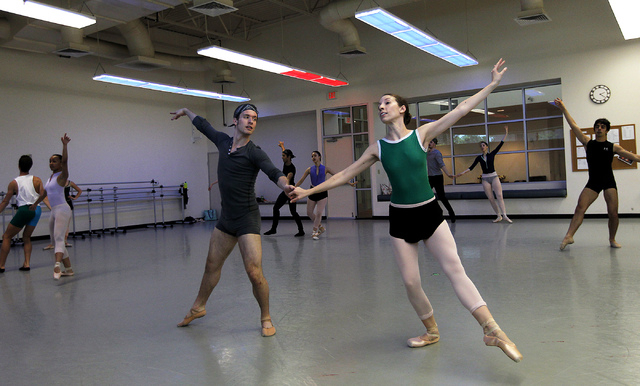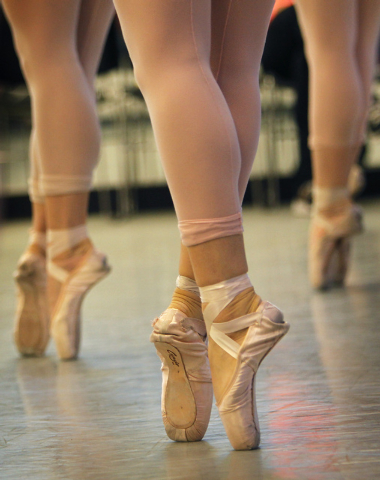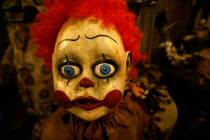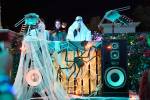‘Coppelia’: whimsical tale with feminist backbone
Do you speak ballet? Our extensive artistic vocabulary doesn’t quite cover this: What is froufrou ballet-speak for “shtick”?
You can practically hear Harpo’s squeeze-horn —honk! honk!— at moments in “Coppelia,” the breezy comic flan adapted by Nevada Ballet Theatre as its two-show season-ender Friday and Saturday at The Smith Center’s Reynolds Hall.
While its comedic sensibility wasn’t broad enough to qualify as The Three Stooges in tights, Friday’s performance revealed “Coppelia’s” broad appeal, coaxing giggles from the kiddies and a “brava” or two from the grown-ups.
Based on a pair of stories, “The Sandman” and “The Doll” by E.T.A. Hoffman, “Coppelia” give us crackpot inventor Dr. Coppelius (guest artist Gene Lubas), who has concocted a life-size doll he names Coppelia. This faux-babe captures the amorous attentions of young Franz (Stephan Azulay) who blows kisses at her and can’t see through the stardust in his eyes that something isn’t quite kosher with Coppelia, who sits motionless on a balcony, gazing at a book she — it — never puts down. Predictably, this ticks off his fiancée, Swanhilde (luminous Alissa Dale), who dances to the rescue when the mad toymaker endangers Franz’s life, also proving to her betrothed why Copellia wouldn’t make much of a romantic partner.
Beyond being a whimsical tale, “Coppelia” — which premiered in 1870 in Paris — has at its core a strong female figure caught between two flawed males, one weird, the other gullible. And as it portrays a man thinking he’s found womanly perfection in a bloodless, lifeless doll, calling it a feminist manifesto a century before its time wouldn’t be a stretch.
At a trim 75 minutes, this “Coppelia” suffers slightly from a truncated opening in which the setup — Franz’s infatuation, Swanhilde’s dismay, Dr. Coppelius ’ introduction and the ridicule he endures from the villagers (planting the seeds of our sympathy for his eventual redemption) —- is dispatched with a brief recorded narration and bits of mime. Yet it does rapidly usher us into the whackjob’s workshop where the fun commences when Swanhilde and her gal pals slip inside, following the smitten Franz, whom the doc has placed under a dangerous spell. And what a workshop — the fantastical lair by costume designer Desmond Heeley is a marvel of gothic grandeur.
After discovering Coppelia is missing a pulse, a disguised Swanhilde dazzles and baffles the daffy old coot, pretending to be Coppelia brought to life in a two-hander of graceful burlesque between Dale and Lubas. Each gifted with comic chops, they pull off her bamboozling of him with dollops of shtick that are a fizzy delight. Smartly, company artistic director James Canfield choreographs it in a contained, economical style to allow every comic gesture to pop off the stage.
Enhancing the antics is the waltz-dominated Leo Delibes score, performed by members of the Las Vegas Philharmonic. With its merry bleats and squeaks during their ditzy dance, it resembles the soundtrack from Bugs Bunny cartoons when Bugs mischievously conspired behind Elmer Fudd’s back.
Post-intermission, “Coppelia” moves to the village square and wedding preparations for the reunited couple. Though the narrative momentum slows, it allows Canfield to open up the action, using the depth and breadth of the stage to free the townspeople-dancers in several numbers from solos to duets to the entire company. Following the clockwork comedy, “Coppelia” climaxes with a sense of pageantry — and the doctor even makes nice with the bride and groom and is invited to the celebration.
Coppelia isn’t, but she wouldn’t have been the life of the party anyway.





























